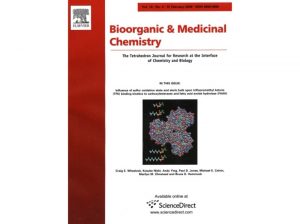Discovery of benzothiazoles as antimycobacterial agents: Synthesis, structure–activity relationships and binding studies with Mycobacterium tuberculosis decaprenylphosphoryl-β-d-ribose 2′-oxidase

Abstract
We report the discovery of benzothiazoles, a novel anti-mycobacterial series, identified from a whole cell based screening campaign. Benzothiazoles exert their bactericidal activity against Mycobacterium tuberculosis (Mtb) through potent inhibition of decaprenylphosphoryl-β-d-ribose 2′-oxidase (DprE1), the key enzyme involved in arabinogalactan synthesis. Specific target linkage and mode of binding were established using co-crystallization and protein mass spectrometry studies. Most importantly, the current study provides insights on the utilization of systematic medicinal chemistry approaches to mitigate safety liabilities while improving potency during progression from an initial genotoxic hit, the benzothiazole N-oxides (BTOs) to the lead-like AMES negative, crowded benzothiazoles (cBTs). These findings offer opportunities for development of safe clinical candidates against tuberculosis. The design strategy adopted could find potential application in discovery of safe drugs in other therapy areas too.





